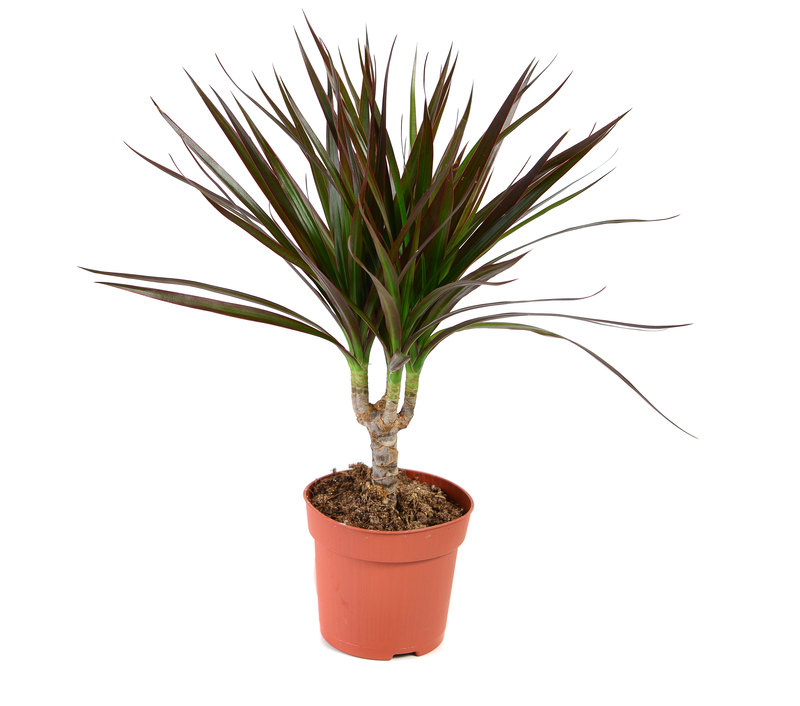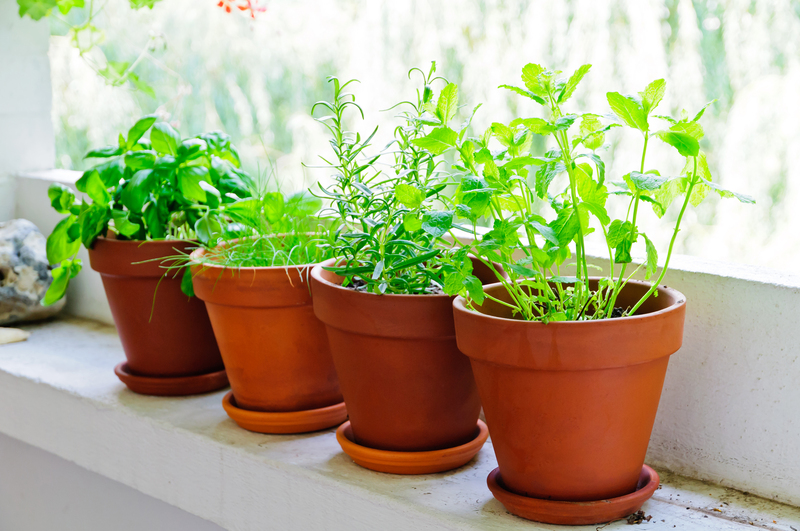Whimsical Gardens: Creating a Space for Children's Exploration
Posted on 23/06/2025
In today's fast-paced digital world, nurturing creativity and curiosity in children is more crucial than ever. Whimsical gardens offer an enchanting escape, sparking the imagination and inviting young adventurers to explore, learn, and engage with nature. If you've ever dreamed of a colorful outdoor haven that captivates your child's interest, then crafting a magical children's exploration garden is the perfect family project. In this comprehensive guide, we'll explore the secrets to designing whimsical gardens that foster natural discovery, creative play, and lifelong memories.
Why Choose a Whimsical Garden for Kids?
A garden designed specifically with children in mind provides numerous benefits, both educational and emotional. Here's why child-friendly whimsical gardens are a must-have for every family:
- Sparks Imagination: Unusual plants, vibrant colors, and playful features create a world of storytelling and make-believe.
- Hands-On Learning: Children can observe plant life cycles, understand habitats, and discover biodiversity in a living classroom.
- Encourages Physical Activity: Exploring nooks, trails, and sensory zones supports motor skills development and promotes health.
- Connects to Nature: Early exposure to gardens grows an appreciation for nature and environmental stewardship.
- Strengthens Family Bonds: A shared gardening project brings families together with purpose and creativity.

Key Elements for Magical Children's Exploration Gardens
To foster wonder and discovery, a whimsical children's garden should be more than just plants. It's about designing an immersive environment with varied features, textures, and spaces for different types of play and exploration.
1. Enchanting Garden Entrances
First impressions set the scene. Create excitement with a charming entrance:
- Arched Trellises: Covered in morning glories or climbing roses, provide a secret gateway into the garden's heart.
- Woven Willow Tunnels: Encourage crawling or running through natural tunnels made from flexible branches.
- Colorful Painted Gates: Invite children to leave the ordinary world behind with a bright, one-of-a-kind gate.
2. Pathways for Adventure
Meandering paths turn every journey into a discovery:
- Stepping Stones: Use mosaic tiles, engraved stones, or log rounds for kids to hop and skip along.
- Secret Trails: Narrow, winding routes flanked by tall grasses or blooming flowers encourage curious exploration.
- Interactive Surfaces: Incorporate tactile materials like smooth pebbles, crunching bark mulch, or soft moss patches.
3. Themed Play Zones
Varied play spaces offer endless opportunities for creative interaction:
- Fairy and Gnome Villages: Arrange tiny houses, furniture, and figurines among tree roots or shaded ground covers.
- Dinosaur Dig Sites: Bury resin 'fossils' or toys in sand pits for aspiring paleontologists to uncover.
- Outdoor Music Areas: Hang wind chimes, xylophones, or drums made from upcycled materials for hands-on sound play.
- Reading Nooks: Tuck waterproof beanbags beneath arching branches or in play tents for outdoor story time.
4. Sensory Engagement Zones
Whimsical exploration gardens for kids should engage all five senses:
- Scented Pathways: Line trails with lavender, mint, sweet alyssum, or lemon balm.
- Edible Zones: Include strawberries, cherry tomatoes, sugar snap peas, or edible flowers for taste-testing.
- Touch Gardens: Plant lamb's ear, fountain grass, or succulents for tactile variety.
- Colorful Blooms: Choose marigolds, zinnias, snapdragons, and sunflowers for a visual feast.
- Sound Corners: Ornamental grasses rustle, water features bubble, and wind chimes sing in the breeze.
5. Wildlife and Pollinator Havens
Invite friendly garden visitors:
- Butterfly Gardens: Plant milkweed, butterfly bushes, or nasturtiums to attract pollinators.
- Bird Feeders and Baths: Offer food and water for feathered friends to observe and learn about bird life.
- Bug Hotels: Stack bamboo, twigs, pinecones, and stones to shelter beneficial insects.
Design Tips for Safe and Fun Children's Exploration Spaces
Prioritize Safety
Safety is paramount in a whimsical children's garden. Keep these principles in mind:
- Avoid Harmful Plants: Skip plants that are toxic if ingested or have thorns and prickles.
- Non-Slip Surfaces: Choose mulch, finely crushed gravel, or soft grass for areas where kids run or play.
- Good Visibility: Ensure you can supervise children easily from nearby windows or seating areas.
- Shade and Shelter: Provide break areas from the sun with tree canopies, sun sails, or playful garden umbrellas.
- Secure Boundaries: Use low fences, hedges, or flower borders to clearly mark the garden's edge.
Age-Appropriate Features
Tailor your magical garden for kids to suit different stages of development:
- Toddlers: Install raised beds and containers at ground level, with soft play surfaces and simple push-along toys.
- Preschoolers: Offer digging zones, water play tables, and mini obstacle courses with balance beams.
- Older Children: Include climbing structures, bigger garden tools, secret forts, or wildlife observation stations.
Encouraging Independence and Discovery
Help kids feel ownership of their whimsical outdoor space:
- Personal Garden Plots: Let every child plant their own patch with favorite flowers, veggies, or herbs.
- DIY Art Projects: Paint pots, label plant markers, or create stepping stones and garden sculptures together.
- Log Books and Nature Journals: Encourage notes, drawings, or collecting leaves and petals for scrapbooks.
Best Plants for Whimsical Kids' Gardens
Plant choice is at the heart of every kid's discovery garden. Choose resilient, low-maintenance varieties with intriguing features:
- Sunflowers: Towering stems create secret hideouts and yield tasty seeds for snacking.
- Snapdragons: Their dragon-like blooms invite imaginative play and come in every color.
- Lamb's Ear: Silky, soft leaves are irresistible to touch.
- Nasturtiums: Edible petals and peppery leaves add color and taste to every adventure.
- Strawberries: Easy-to-grow, rewarding, and delicious.
- Sweet Peas: Fragrant climbers for archways and trellises.
- Pumpkins and Gourds: Let children watch vines sprawl, then harvest for fall crafts and cooking.
*Tip: Mix annuals with perennials and evergreens for year-round interest and ongoing discovery!*
Whimsical DIY Garden Projects for Children
Hands-on projects not only enhance the magical look of a garden but also offer endless opportunities for learning and fun. Try these creative ideas:
Painted Rock Markers
- Use smooth stones and waterproof paints to make fun plant markers or garden creatures.
- Let children decorate them with bugs, fairies, or silly faces.
Fairy Doors and Houses
- Craft doors from wood scraps or clay and affix them to tree trunks, stumps, or the bases of bushes.
- Use acorns, moss, and twigs for roofs and garden "furniture."
Willow or Bamboo Teepee Huts
- Bundle long canes and tie at the top, securing the bases in the ground in a circle.
- Let climbing beans or sweet peas cover the frame for a living playhouse.
Miniature Fairy or Dinosaur Gardens
- Use old pots or wooden crates to create themed mini gardens with tiny plants, gravel trails, and figurines.
Wind Chimes and Mobile Art
- Hang recycled materials, pinecones, or colored beads for visual and auditory stimulation.
Seasonal Activities for Continuous Exploration
A truly whimsical children's garden changes with the seasons, offering new discoveries year-round.
Spring
- Plant new seeds, observe emerging bulbs, and watch butterflies return.
- Make nature crowns from fresh flowers and leaves.
Summer
- Build sunflower forts and pick ripe strawberries.
- Hold garden tea parties or scavenger hunts.
Autumn
- Harvest pumpkins and gourds for crafts.
- Press colorful leaves for art projects or garden journals.
Winter
- Watch for birds, hang homemade feeders, and explore frost patterns.
- Start seeds indoors for next spring.
Boosting Learning in Whimsical Children's Gardens
A magical children's garden is more than just a place for play--it's a living laboratory. Here's how you can boost your child's learning:
- Science Experiments: Test soil, measure plant growth, and explore composting with hands-on mini-projects.
- Storytelling: Let kids invent tales about fairies, animals, or explorers based on the spaces and features they find.
- Math Skills: Introduce counting, sorting, measuring, and pattern recognition with seeds, petals, and garden layouts.
- Art and Creativity: Encourage sketching flowers, crafting nature art, or photographing interesting leaves and bugs.

Whimsical Garden Maintenance: Including Your Children
A children's exploration garden truly comes alive when kids help maintain and care for it. Involve your child with:
- Watering: Let them use a child-sized watering can or hose nozzle for gentle plant care.
- Weeding: Show them which plants to pull and which to keep, reinforcing responsibility and stewardship.
- Harvesting: Encourage picking vegetables, fruit, or herbs for meals and snacks together.
- Composting: Teach kids about recycling kitchen scraps and garden waste to nourish future plants.
*Tip: Assign special garden "jobs" based on age, building confidence and pride in their space!*
Conclusion: Growing a World of Wonder in Whimsical Gardens for Kids
A well-designed whimsical garden is more than an outdoor play area. It's a magical world where adventure, learning, and creativity bloom side by side. By weaving together sensory features, hands-on activities, and child-centric design, you'll cultivate a space that encourages discovery and joy season after season. From fairy villages to sunflower houses, every corner has a story to tell--waiting for your child's next great exploration.
Ready to start your whimsical garden for children? Let your family's ideas bloom, and watch as your yard transforms into a realm of magic, learning, and laughter. Happy gardening!

